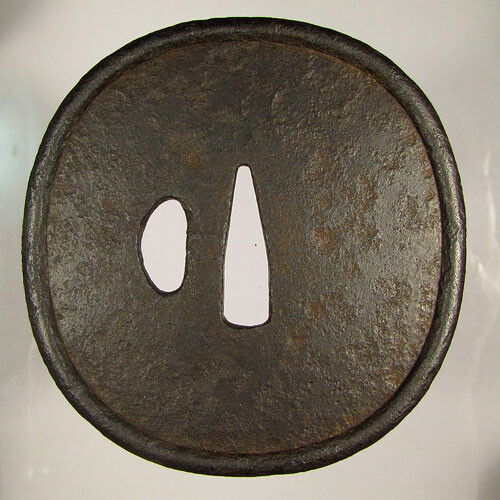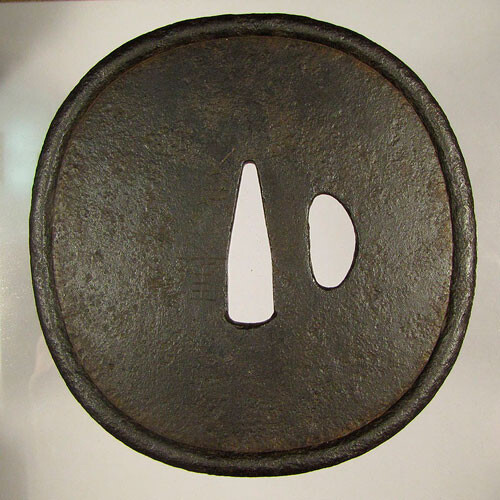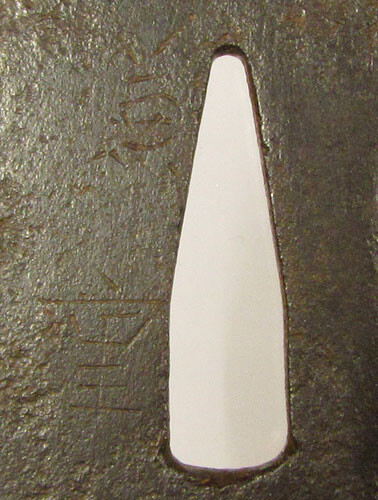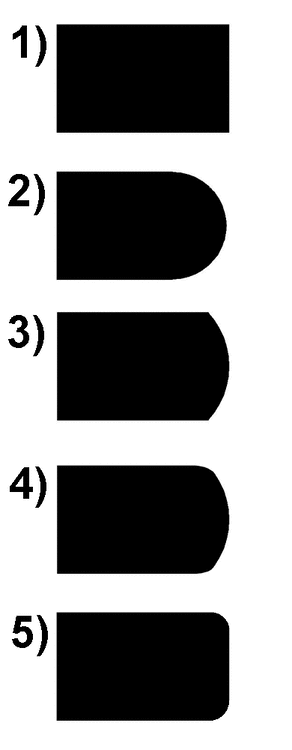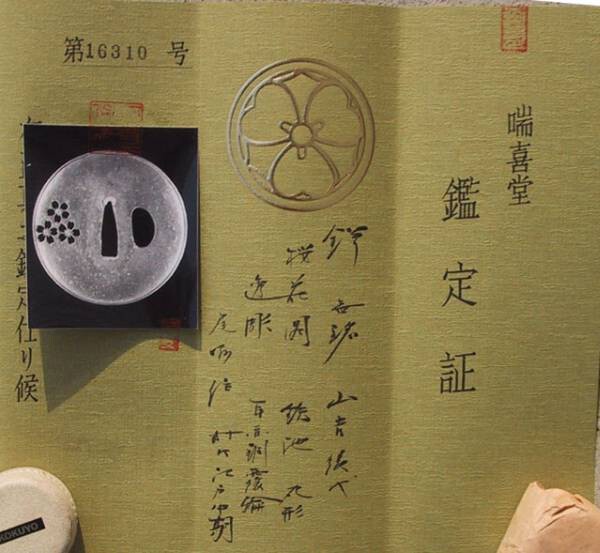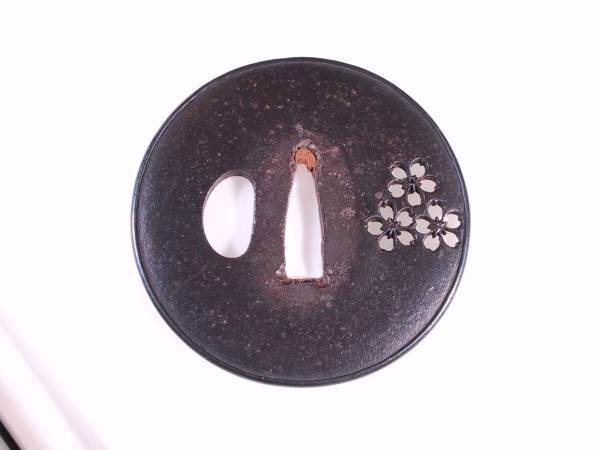-
Posts
224 -
Joined
-
Last visited
-
Days Won
1
Content Type
Profiles
Forums
Events
Store
Downloads
Gallery
Everything posted by andreYes
-
A small question concerning geography 江府住: I thought that it is "Efu-ju" and it means "from Edo". But I've found recently that it reads as "Kofu-ju" - "from Kofu". What is the correct reading/translation?
-
Thank you all for comments! Reinhard, here are the measurements (sorry, I've forgot to indicate them): vertical x horisontal sizes - 8,6x8,3 cm, thickness ~3,5 mm, mimi - 6 mm. The weight is 156 g. So, it's quite large and heavy. Christian, I can't tell anything for sure about the box, only that it came to me with this tsuba ... Don't know what to think about the nakago-ana... Sure, it wasn't altered, and if the tsuba was mounted on a sword (the character of pitting on the plate let me hope so) it wasn't remounted to another blade. Thank you, Steve, you offer me hope :D And really very nice tsuba, you posted. Made with a good sense of taste!
-
Hi all! Please help me with identificaton of my new tsuba. It's made in katchushi style, with wa-mimi, dark dense patina. Probably, there was a nunome zogan decoration on the rim: it seems that there are remains of cross hatch pattern. Looks like it is the early Edo, I think. Inscription is 兼重 - Kaneshige. There are several Kaneshige In Haynes Index: three from Hoan family, Nara, Aizu Shoami, and some other who made sukashi or brass inly tsuba. The genealogy of Hoan family is quite difficult Haynes refers to two Hoan Hisatsugu Kaneshige: the third Hoan (or fourth, according to "An Aestetic study...") and fourth (or fifth). Besides, there is one Hoan Rokuemon Kaneshige. According to the hako-gaki, came with this tsuba (Markus and Koichi, thank you again for translation), it is made by the 4th or 5th generation of Hoan. But from the third generation the Hoan masters worked in "pure tsuba maker's work": ubuzukashi, jisukashi and inlay. The katchushi style is common for the first and second generations of this family. So, can I believe the hako-gaki, and think that this tsuba is made by the third/fourth Hoan master but in the style of previous generations of his family? Or it is the Hoan Rokuemon Kaneshige - unfortunately, I can't find no additional information about him... Maybe someone saw more examples of works and inscriptions of these Hoan masters? Besides, I've found in the web several examples of tsuba signed "Kaneshige". One of them (here and here) have a note: "Signed Kaneshige on the back. Kaneshige apparently prepared iron plates for Hamano school inlay." Will be very grateful for any comments/opinions!
-
I'm trying to clarify the terminology of tsuba edge. I'd like to understand where is the border between maru mimi and kaku mimi koniku? On the following picture the (1) in obviously kaku, (2) - maru, (3) - kaku koniku. And what about the (4) and (5)? Sorry if the question is stupid
-
Ford, thank you! You very exactly expressed what confused me in this tsuba .
-
Thanks, Pete! Why do you think that it was produced by a shop, not by a specific person?
-
Dear experts, Please help me to understand, is this tsuba an original work the of same Masahisa as on MFA website? What do you think? Thank you in advance!
-
Sorry! I didn't understand from the first time :D Thank you again!!!
-
Markus, Koichi, Thank you for the information about the Hoan Kaneshige! Besides I'd like to know, what else is written here. Could anybody translate?
-
Please help me to translate a hako-gaki. I can just identify several kanji in the beginning: 銘 兼重 - mei kaneshige 法安 .. 久次 .. - hoan .. hisatsugu ..
-
Very interesting review! A lot of information to learn. Looking forward to read more...
-
Dear Mark, Your posts are a great help for me! Thank you very much for your comments!
-
Dear Ford, Very good idea! I'd like to participate, please count me in too!
-
Thank you so much, Morita-san!! :D
-
Can anyone read the handwritten text on the certificate? Even professional translators (here, in Moscow) unable to do anything , because it is "executed in a stylized handwritten form" . And maybe someone, who have seen a lot of certificates, could give a guess, why the ura side photo is attached to the sertificate? As I can see, there is no mey on this side (the only reason I can imagine). Many thanks in advance!
-
Yes, I know . In 2006... Very nice tsuba, and made by the second Yamakichibei. The tsuba, I'm asking about, is supposed to be made by the third Yamakichibey (in Genroku era). The only thing that I know about him, is that his tsubas were polished and with ko-sukashi, as opposed to his predecessors'.
-
Hello all! Please help me with a tsuba from a Japanese online auction. It comes with a Kanteisho certificate issued by Mitsuo Shibata (I suppose). I've never seen this kind of certificate before... Is it authentic? As I understand, the tsuba is made by Sandai Yamakichi (Sakura Yamakichibei), according to the paper. Is it look like a work of this artist? Someone seen his works? By the way, why the photo on the sertificate is from the ura side?
-
Hello, Marc! I thought about ISSHINSHI SHIGEHARU (H 08225), and there is an example of his inscription in the Haynes book. Besides, I've found examples of two Shigeharu (Isshinshi and Shoami) inscriptions in Joly's "Shosankenshu". Here is a picture of these examples side by side with the inscription on the tsuba. I'm not sure, could it be the same artist? What do you think?
-
Very nice tsuba, James! By the way, what is inscribed to the right of nakago ana? Conserning Shigeharu... What is more probably: that my Shigeharu is from Myochin school, but not known by Haynes, or he is listed by Haynes, but he is from Shoami, Umetada or any other school?
-
Hi! Please help me to attribute this tsuba. I think it's late Edo. A simple plate made of layered iron, with inscription: 重治作 - Shigeharu saku I've heared that such kind of tsuba are usually associated with Myochin school. In Haynes I've found several Shigeharu, but none of them is from Myochin. Thank you in advance!
-
:D I've reanimated this topic, because here I've seen the word "kao" for the first time Here is the answer to my own question: kao - signature in form of monogram kakihan - a kind of author's seal or stamp, used as a signature. Please correct me, if I'm wrong.
-
Thank you, John! Very interesting method. I knew about small modifications of old tsuba, like adding hitsu ana, but using it as a raw material Concerning Nara... I've found very few information about this school. Could anyone advice, where can I get more information (distinctive features, history, artists)? Maybe there are some articles or books about Nara tsuba? And I wonder to know, how to distinguish Nara tsuba from Mito or Aizu Shoami?
-
I need your advice about the following tsuba. The seller said that the ji was made in Muromachi, and the zogan was added in early Edo by a Nara school craftsman (probably from 2-d or 3-d generation, he even supposed that it could be Toshiharu). What do you think about it? Is it a usual practice when the tsubako (from Nara or other schools) use an old tsuba as a base of his work? By the way, what the shape of the upper left "insertion" means? The bottom right are inome and matsukawabishi, as I know. Thank you for any information and opinions!
-
Don't want to make a new topic for a small question: Is there any difference between "kao" and "kakihan", or these words are synonyms? (Admin comment - almost 1 full year later )
-
Thank you! It's very pleasant to me ! It was my first attempt to make a site...



